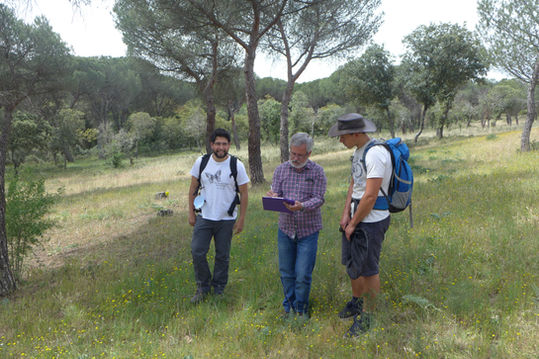
MICROCLIMATE, MOUNTAINS AND REFUGIA
Climate change could threaten species as parts of their geographic ranges cease to be climatically favourable, leading to range contractions and reductions in species richness. There is increasing evidence for recent declines and extirpations of species from the hottest or driest parts of their distributions – the “warm” range margins at low latitudes or low elevations. Yet there is considerable variation in rates of range contraction among taxa and regions. My research aims to understand the environmental factors which buffer species against the effects of climate change, and to use this understanding to help adapt conservation by promoting persistence in climate change “refugia”.
MEDITERRANEAN MOUNTAINS
Many European butterfly species are restricted to mountain ranges in the warmest parts of their geographic ranges, such as the Iberian Peninsula. My collaboration with David Gutiérrez at Universidad Rey Juan Carlos showed that several mountain butterfly species have suffered range contractions in the Sierra de Guadarrama mountains near Madrid as regional temperatures have warmed. Many species are now restricted to higher elevations than forty years ago, and species richness has declined at lower elevations as a result. However, the populations of some species and in some habitats appear to have survived or bounced back from recent warming. My work (recently also collaborating with the entomology group from the Universidad Autónoma de Madrid) aims to test the factors, including vegetation and topography, which influence this ecological resilience to climate change.
ENGLISH MICROCLIMATES
In northern Europe too, some parts of the landscape are warming faster than others, and some species are more sensitive to climate change than others. Working with Andy Suggitt and Ilya Maclean at the University of Exeter, we showed that in England the most sensitive species have been buffered against the effects of climate change in places where topographic variation such as in hills, valleys and hollows led to the widest range of microclimatic conditions. Understanding the features of these potentially refugial landscapes could be valuable to help conserve species in a changing climate.





